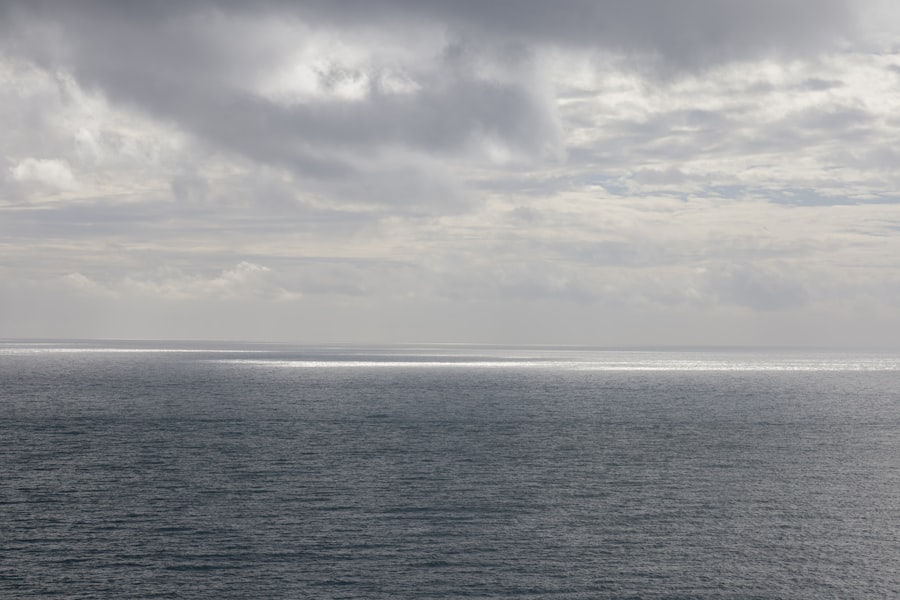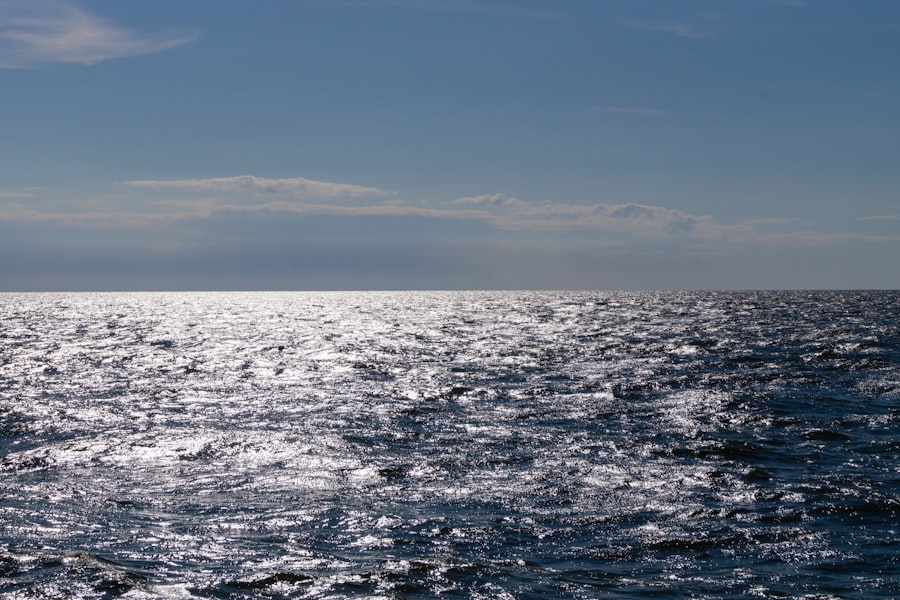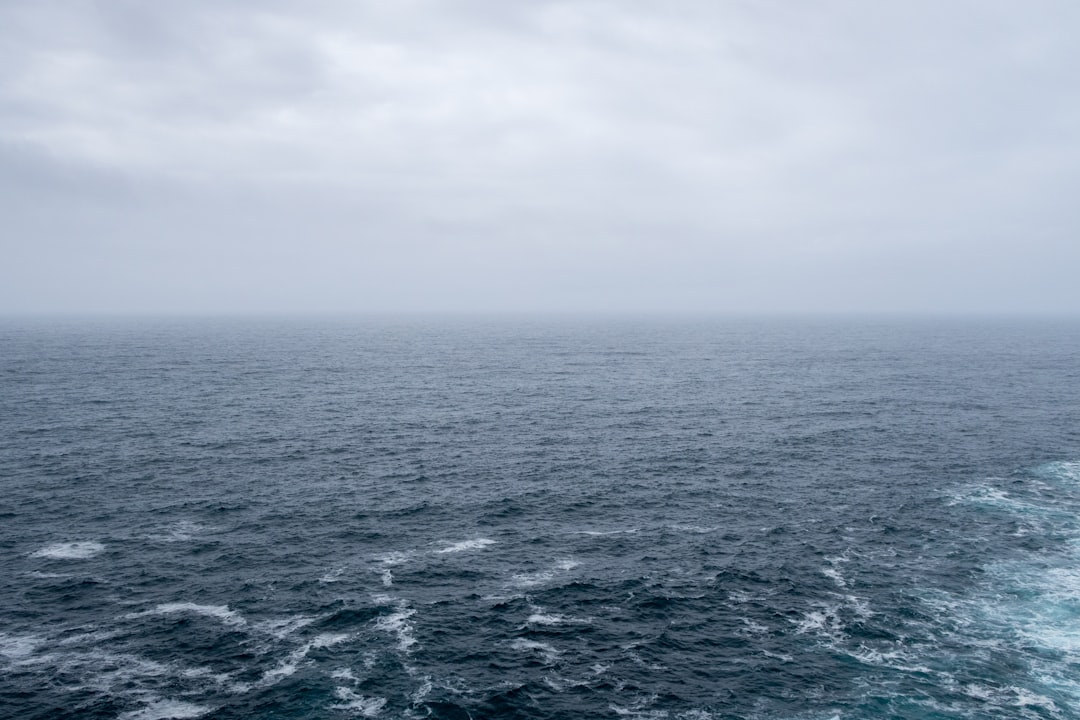The Drake Passage, a body of water that separates South America from Antarctica, is renowned for its tumultuous waters and unpredictable weather. Stretching approximately 800 kilometers, it serves as a critical maritime route for vessels traveling to and from the Antarctic region. The passage is named after Sir Francis Drake, the English sea captain who navigated these waters in the late 16th century.
The Scotia Sea, located to the north of the Drake Passage, is an equally significant area, characterized by its deep oceanic trenches and rich marine biodiversity. Together, these two bodies of water form a vital link between the Southern Ocean and the Atlantic Ocean, making them essential for both navigation and ecological studies. The Drake Passage is often described as one of the most challenging maritime routes in the world due to its strong currents and frequent storms.
The confluence of the Atlantic and Pacific Oceans creates a unique environment where weather patterns can shift rapidly, leading to rough seas that can test even the most seasoned sailors. The Scotia Sea, while generally calmer, is not without its own challenges, including icebergs and shifting sea ice that can pose hazards to navigation. Understanding these dynamics is crucial for anyone planning to traverse this region, as they can significantly impact travel plans and safety.
Key Takeaways
- The Drake Passage and Scotia Sea are known for their challenging and unpredictable weather conditions, making them some of the most treacherous waters to navigate.
- The best time to navigate the Drake Passage and Scotia Sea is during the austral summer, from November to March, when the weather is relatively milder and wildlife is abundant.
- When choosing the right vessel for the journey, consider factors such as size, stability, and amenities to ensure a comfortable and safe passage.
- Safety precautions and emergency protocols are crucial when traveling through these waters, including mandatory safety drills and the presence of experienced crew members.
- The Drake Passage and Scotia Sea are home to a diverse range of wildlife and marine life, including penguins, seals, whales, and various seabird species.
Best Time to Navigate the Drake Passage and Scotia Sea
The optimal time to navigate the Drake Passage and Scotia Sea typically falls between late spring and early autumn, specifically from November to March. During these months, the weather tends to be milder, with calmer seas and more stable conditions. This period coincides with the Antarctic summer when wildlife is most active, making it an ideal time for those interested in observing marine life.
Travelers can expect longer daylight hours, which not only enhances visibility but also provides ample opportunities for exploration and photography. However, even during this peak season, conditions can be unpredictable. Sudden storms can arise, leading to rough seas that may challenge even experienced mariners.
Therefore, it is essential for travelers to remain flexible with their plans and be prepared for potential delays or changes in itinerary. Those who venture into these waters should be equipped with a sense of adventure and an understanding that nature often dictates the course of travel in this remote part of the world.
Choosing the Right Vessel for the Journey

Selecting the appropriate vessel for navigating the Drake Passage and Scotia Sea is a critical decision that can greatly influence the overall experience. Various types of ships are available, ranging from large cruise liners to smaller expedition vessels. Larger ships often provide more amenities and comfort but may lack the agility needed to navigate through ice-laden waters or narrow passages.
On the other hand, smaller vessels are typically designed for exploration and can access areas that larger ships cannot reach, offering a more intimate experience with the surrounding environment. When choosing a vessel, travelers should consider factors such as stability, ice-strengthening capabilities, and onboard facilities. Modern expedition ships are often equipped with advanced technology to ensure safety and comfort during rough seas.
Ultimately, the choice of vessel should align with personal preferences and travel goals, ensuring a memorable adventure through these remarkable waters.
Safety Precautions and Emergency Protocols
| Category | Metric | Value |
|---|---|---|
| Safety Precautions | Fire Extinguishers | 20 |
| Safety Precautions | Emergency Exits | 4 |
| Emergency Protocols | Evacuation Drills | Monthly |
| Emergency Protocols | First Aid Kits | 10 |
Safety is paramount when navigating the Drake Passage and Scotia Sea, given the unpredictable nature of these waters. Travelers should familiarize themselves with safety protocols before embarking on their journey. Most reputable vessels will conduct safety briefings upon departure, outlining emergency procedures and equipment available onboard.
Passengers are encouraged to pay close attention during these briefings and ask questions if any aspect is unclear. In addition to understanding emergency protocols, travelers should also be prepared for potential medical emergencies. It is advisable to carry a basic first-aid kit and any personal medications needed during the trip.
Many expedition vessels are equipped with medical facilities and staff trained to handle emergencies; however, having personal supplies can be beneficial in case of minor injuries or ailments. By prioritizing safety and being prepared for unforeseen circumstances, travelers can enjoy their journey through the Drake Passage and Scotia Sea with greater peace of mind.
Wildlife and Marine Life in the Drake Passage and Scotia Sea
The Drake Passage and Scotia Sea are teeming with diverse wildlife and marine life, making them a paradise for nature enthusiasts. The region is home to various species of whales, including humpback, minke, and orca whales, which can often be spotted during their migratory patterns. Additionally, seabirds such as albatrosses and petrels soar above the waves, providing breathtaking views for those on deck.
The rich marine ecosystem supports an array of life forms, from krill to seals, creating a vibrant food web that sustains these magnificent creatures. For many travelers, observing wildlife in its natural habitat is one of the highlights of navigating this region. Guided excursions often include opportunities for whale watching or birding, allowing passengers to witness these animals up close while learning about their behaviors and habitats from experienced naturalists.
The chance to see penguins waddling on ice floes or seals basking on rocky shores adds an unforgettable element to the journey through the Drake Passage and Scotia Sea.
Weather and Climate Considerations

The weather in the Drake Passage and Scotia Sea can be highly variable, influenced by factors such as ocean currents and atmospheric conditions. Travelers should be prepared for a range of weather scenarios, from sunny skies to heavy rain and strong winds. The region experiences a maritime climate characterized by cool temperatures year-round; however, summer months tend to be milder compared to winter months when temperatures can plummet.
Understanding weather patterns is crucial for planning activities during the journey. While summer offers more stable conditions, it is still advisable to dress in layers and bring waterproof gear to accommodate sudden changes in weather. Travelers should also stay informed about forecasts provided by onboard meteorologists or guides who monitor conditions closely.
By being adaptable and prepared for varying weather conditions, travelers can maximize their enjoyment of this stunning yet unpredictable environment.
Navigation Tips for a Smooth Passage
Navigating the Drake Passage and Scotia Sea requires careful planning and awareness of maritime practices. One essential tip for a smooth passage is to stay informed about current sea conditions before setting sail. Many vessels provide updates on weather patterns and sea states that can help travelers anticipate what to expect during their journey.
Additionally, understanding basic nautical terminology can enhance communication with crew members regarding navigation concerns. Another important aspect of navigation is maintaining a flexible itinerary. Given the unpredictable nature of these waters, it may be necessary to adjust plans based on weather conditions or other factors that arise during travel.
Passengers should embrace this flexibility as part of the adventure rather than viewing it as an inconvenience. By remaining open-minded and adaptable, travelers can fully appreciate the beauty of their surroundings while ensuring a safe passage through this remarkable region.
Historical and Geological Significance of the Region
The Drake Passage and Scotia Sea are not only significant for their natural beauty but also for their historical and geological importance. The passage has long been a critical route for explorers seeking to navigate between continents, serving as a gateway to Antarctica since early exploration efforts in the 19th century. Notable figures such as Ernest Shackleton have traversed these waters in pursuit of discovery, leaving behind a legacy that continues to inspire adventurers today.
Geologically, this region is fascinating due to its unique features shaped by tectonic activity over millions of years. The underwater topography includes deep trenches and ridges that provide insight into Earth’s geological history. The interaction between tectonic plates has also contributed to the formation of islands within the Scotia Sea, each with its own distinct ecosystems.
Understanding this geological context enriches travelers’ appreciation of the landscape they encounter while navigating through these storied waters.
Cultural and Research Opportunities in the Area
The Drake Passage and Scotia Sea are not only natural wonders but also hubs for scientific research and cultural exchange. Numerous research stations operate in Antarctica, where scientists study climate change, marine biology, and glaciology among other fields. Travelers have opportunities to engage with researchers or participate in citizen science projects that contribute valuable data to ongoing studies about this fragile environment.
Culturally, interactions with fellow travelers from around the world create a unique atmosphere onboard vessels traversing these waters. Sharing stories and experiences fosters connections among passengers who share a passion for exploration and adventure. Additionally, some expeditions may include visits to research stations or educational programs that highlight indigenous cultures or conservation efforts in Antarctica.
These experiences enrich travelers’ understanding of both the natural world and human impact on it.
Packing and Preparation for the Journey
Proper packing is essential for a successful journey through the Drake Passage and Scotia Sea. Travelers should prioritize functionality when selecting clothing items; layering is key due to fluctuating temperatures throughout the day. Waterproof outer layers are crucial for protection against rain or sea spray while spending time on deck or participating in excursions.
In addition to clothing, travelers should consider bringing essential gear such as binoculars for wildlife watching, cameras for capturing stunning landscapes, and personal items like sunscreen or lip balm to protect against sun exposure at high altitudes. It is also wise to pack any necessary medications or personal items that may not be readily available onboard.
Making the Most of the Experience: Activities and Excursions
To fully appreciate all that the Drake Passage and Scotia Sea have to offer, travelers should take advantage of various activities and excursions available during their journey. Many expedition vessels provide opportunities for guided hikes on remote islands or kayaking excursions that allow passengers to explore coastal areas up close while observing wildlife in its natural habitat. Additionally, onboard lectures led by experts in marine biology or glaciology offer valuable insights into the region’s ecology and history.
These educational programs enhance travelers’ understanding of what they encounter during their voyage while fostering a deeper appreciation for this unique environment. By engaging actively with both onboard activities and shore excursions, travelers can create lasting memories while exploring one of Earth’s most extraordinary regions.
The Drake Passage and the Scotia Sea are critical components of the Southern Ocean, playing a significant role in global ocean circulation and climate regulation. For those interested in exploring more about these fascinating regions, a related article can be found on MyGeoQuest. This article delves into the unique geographical and oceanographic features of the area, providing insights into its ecological importance and the challenges faced by researchers studying these remote waters. To learn more, visit the article on MyGeoQuest.
WATCH NOW! Drake Passage: Earth’s Deadliest Waters Revealed
FAQs
What is the Drake Passage and Scotia Sea?
The Drake Passage is the body of water between the southern tip of South America and the South Shetland Islands of Antarctica. The Scotia Sea is located to the east of the Drake Passage and is bounded by South Georgia, the South Orkney Islands, and the Antarctic Peninsula.
What is the significance of the Drake Passage and Scotia Sea?
The Drake Passage and Scotia Sea are important for oceanic and atmospheric circulation, as they serve as a major conduit for the movement of water and air between the Atlantic, Pacific, and Indian Oceans. They also play a crucial role in the distribution of marine life and the transport of nutrients.
What is the weather like in the Drake Passage and Scotia Sea?
The weather in the Drake Passage and Scotia Sea can be extremely harsh and unpredictable, with strong winds, high waves, and rapidly changing conditions. The area is known for its notorious storms and rough seas, making it one of the most challenging maritime regions to navigate.
What wildlife can be found in the Drake Passage and Scotia Sea?
The Drake Passage and Scotia Sea are home to a diverse range of marine life, including whales, seals, penguins, and various seabird species. The nutrient-rich waters support a thriving ecosystem, making it a popular destination for wildlife enthusiasts and researchers.
Are there any human settlements in the Drake Passage and Scotia Sea?
There are no permanent human settlements in the Drake Passage and Scotia Sea, as the region is largely uninhabited and inaccessible due to its remote location and harsh environmental conditions. However, scientific research stations and temporary research outposts can be found on some of the nearby islands and the Antarctic Peninsula.
